Helmet Of Meskalamdug – Sumerian King Of The First Dynasty Of Ur
A. Sutherland - AncientPages.com - Sir Leonard Woolley found the gold helmet of King Meskalamdug (Mes-Kalam-Dug ) (1880 – 1960), a British archaeologist best known for excavating Ur in Mesopotamia.
 Electrotype copy of the Gold Helmet of Meskalamdug from Ur (Original, dated to 2600 BC and discovered in the Royal Cemetery of Ur, is now in the Iraq Museum.
Electrotype copy of the Gold Helmet of Meskalamdug from Ur (Original, dated to 2600 BC and discovered in the Royal Cemetery of Ur, is now in the Iraq Museum.
Meskalamdug (Mes-Kalam-Dug ) - ("hero of the good land") was an early Sumerian king of the First Dynasty of Ur in the 26th century BC.
He does not appear in the Sumerian King List. Still, He is known from a royal cylinder seal found in the Royal Cemetery at Ur, a royal bead inscription found in Mari, both mentioning him as King, and possibly his tomb, grave PG 755 at the Royal Cemetery at Ur.
From an inscription on a lapis lazuli bead found at Mari, we know that the royal Meskalamdug took the title King of Kish and was the father of Mesannepada. However, one vessel in the young man's grave had an inscription named "Ninbanda." She was called "queen," but it is still problematic to determine women's identity.
Was she the wife of Meskalamdug, the King? Or perhaps she was the wife of Mesannepada?
An inscription from the city of Mari informs that Meskalamdug is the father of Mesanepada ("Youngling chosen by An"), the ruler listed for the First Dynasty of Ur (ca. the 26th century BC).
The name 'Meskalamdug' appears on inscriptions found in two graves from the royal cemetery of Ur, unearthed in 1924 by Sir Woolley. In one grave with the remains of a woman, archaeologists also found a cylindrical seal with the inscription "Meskalamdug, King." It could indicate a sacrifice made in his name during the funeral. Made of shell, with a core in lapis-lazuli, the seal depicts two crossed lions attacking bulls, with Enkidu and a naked man in profile participating in the fight.
The second grave includes two golden bowls and a golden shell-shaped lamp, on which the name "Meskalamdug" was engraved. The excavation of this grave revealed the famous helmet of Meskalamdug, a golden artifact in the form of a wig with finely sculpted hair. Another artifact from the city of Mari was a bead from lapis-lazuli bearing the inscription of Mesanepada.
This inscription mentions Meskalamduga as the father of Mesanepada.
The helmet, 22.7cm high, 27 cm long, and 21 cm wide, was meticulously made from a single sheet of gold. It is shaped like a wig with carved curls, and the bun at the back was created for the King's hair. The wig-like pattern was hammered from the inside of the helmet. The holes around the edge were placed so a cloth lining could be sewn in to make it more comfortable.
This kind of helmet (instead of parade armor, not used in battle) was believed to be worn only by kings and high-ranking dignitaries.
Meskalamdug's tomb represents one of the Royal Tombs of Ur of the Chaldees, a city mentioned in the Hebrew Bible as the birthplace of the Jewish patriarch Abraham; however, the city's location has been debated. One of the graves investigated by Sir Woolley mainly contained valuable and fascinating objects. A man's body was discovered in a wooden coffin at the shaft's bottom.
Findings around the coffin include many remarkable artifacts such as spears and vases of alabaster and clay, gold-mounted daggers, copper daggers and tools, fifty copper bowls, silver bowls, and plates.
Inside the coffin, the found remains included the body, a gold dagger, lapis lazuli, gold beads, two gold bowls, and a gold lamp. Beside the decayed skull was a helmet of beaten gold. A cuneiform inscription on two bowls and the lamp read 'Meskalamdug.' The same name (and the word 'lugal') was also carved on a cylinder seal found in another tomb, and 'lugal' - King.
"One particularly rich tomb that Woolley did not include among the royal tombs, in large part because it did not have a tomb chamber or retainers, nevertheless stands out. PG 755 consisted of a rectangular pit measuring 2.50 by 1.50 meters with artifacts the likes of which Woolley had found only in royal tombs.
In the coffin, for example, were gold and silver lamps and a second gold bowl inscribed with the name Meskalamdug. Not far from the body, a larger collection of jewelry was found, including a copper pin usually worn by women in the royal tombs, with ahead in the form of a squatting monkey. It is believed that the jewelry was a gift to be presented to underworld deities. Outside the coffin was, as Sir Woolley noted, a "bewildering" number of artifacts, including metal vessels inscribed with the names "Meskalamdug" and Ninbanda, the queen.." 1
The honorable and traditional title of the King of Kish was reserved for those who ruled over the regions of Sumer and Akkad.
Some of the Kish rulers' names refer to Akkad, which suggests the early consolidation of Semitic power located in the northern part of Lower Mesopotamia. The King of Kish was often an Akkadian ruler who dominated Sumer.
Written by – A. Sutherland AncientPages.com Staff Writer
Updated on January 5, 2024
Copyright © AncientPages.com All rights reserved. This material may not be published, broadcast, rewritten or redistributed in whole or part without the express written permission of AncientPages.com
Expand for referencesReferences:
- Donald P. Hansen, Holly Pittman, "Treasures from the Royal Tombs of Ur"
(Univ. Of Pennsylvania Pr, Univ. of Pennsylvania. Museum of Archaeology and Anthropology)
R. L. Zettler, L. Horne, Treasures from the Royal Tombs of Ur
M. Baizerman, Dawn and Sunset: A Tale of the Oldest Cities in the Near East
More From Ancient Pages
-
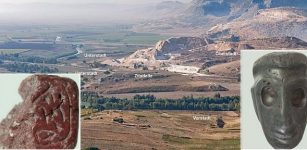 Bronze Age And Iron Age City Complex Once Known As Kummanni Unearthed In Turkey
Archaeology | Dec 4, 2018
Bronze Age And Iron Age City Complex Once Known As Kummanni Unearthed In Turkey
Archaeology | Dec 4, 2018 -
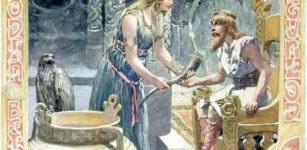 Death Of Kvasir And How Famous Mead Of Poetry Was Created, Stolen And Finally Recovered By Odin
Featured Stories | Apr 14, 2018
Death Of Kvasir And How Famous Mead Of Poetry Was Created, Stolen And Finally Recovered By Odin
Featured Stories | Apr 14, 2018 -
 Massive Menhir Champ Dolent Built By Fairies In Ancient Beliefs Of Brittany’s People
Featured Stories | Jan 13, 2025
Massive Menhir Champ Dolent Built By Fairies In Ancient Beliefs Of Brittany’s People
Featured Stories | Jan 13, 2025 -
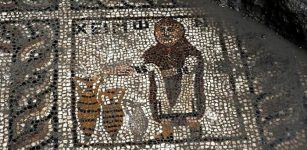 Ancient Mosaics Dated To The First Century Discovered In Southern Turkey
Archaeology | Jan 14, 2019
Ancient Mosaics Dated To The First Century Discovered In Southern Turkey
Archaeology | Jan 14, 2019 -
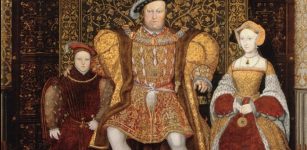 On This Day In History: Henry VIII Ascended The Throne Of England – On Apr 22, 1509
News | Apr 22, 2016
On This Day In History: Henry VIII Ascended The Throne Of England – On Apr 22, 1509
News | Apr 22, 2016 -
 Huge, Stunning 2,000-Year-Old Marble Statues Restored In Ashkelon, Israel
Archaeology | Sep 17, 2024
Huge, Stunning 2,000-Year-Old Marble Statues Restored In Ashkelon, Israel
Archaeology | Sep 17, 2024 -
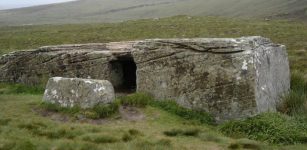 Dwarfie Stane: Mysterious 5,000-Year-Old Rock-Cut Tomb On Dark Enchanted Island Of Hoy, Scotland
Featured Stories | Feb 21, 2023
Dwarfie Stane: Mysterious 5,000-Year-Old Rock-Cut Tomb On Dark Enchanted Island Of Hoy, Scotland
Featured Stories | Feb 21, 2023 -
 New Giant Geoglyph Of Orca With Mysterious Symbols And A ‘Trophy Head’ Found In Nazca Lines
Archaeology | Nov 18, 2017
New Giant Geoglyph Of Orca With Mysterious Symbols And A ‘Trophy Head’ Found In Nazca Lines
Archaeology | Nov 18, 2017 -
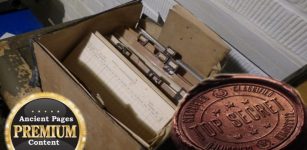 Strange Radiation Case – Medical Files Secretly Erased?
Featured Stories | Sep 13, 2019
Strange Radiation Case – Medical Files Secretly Erased?
Featured Stories | Sep 13, 2019 -
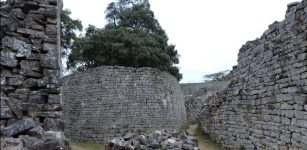 Great Ruins of Zimbabwe: Unsolved Secrets Of Bizarre Buildings Without Windows And Doors
Civilizations | Jun 24, 2015
Great Ruins of Zimbabwe: Unsolved Secrets Of Bizarre Buildings Without Windows And Doors
Civilizations | Jun 24, 2015 -
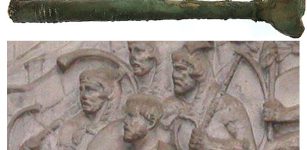 Vindolanda Treasures: Rare Roman Cornu Mouthpiece – Instrument of War – Uncovered
Archaeology | Sep 24, 2022
Vindolanda Treasures: Rare Roman Cornu Mouthpiece – Instrument of War – Uncovered
Archaeology | Sep 24, 2022 -
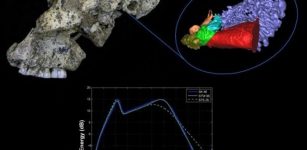 New Study: Fossils Reveal Human Ancestors’ Hearing Abilities
Human Beginnings | Sep 28, 2015
New Study: Fossils Reveal Human Ancestors’ Hearing Abilities
Human Beginnings | Sep 28, 2015 -
 Tokoloshe: Demonic Creature That Feeds On Spiritual Energy Of Its Victims
Featured Stories | Sep 9, 2020
Tokoloshe: Demonic Creature That Feeds On Spiritual Energy Of Its Victims
Featured Stories | Sep 9, 2020 -
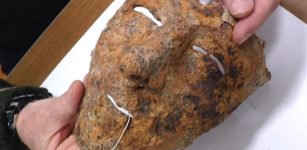 Extremely Rare Roman Cavalry Parade Mask Discovered In Romania
Archaeology | Feb 8, 2023
Extremely Rare Roman Cavalry Parade Mask Discovered In Romania
Archaeology | Feb 8, 2023 -
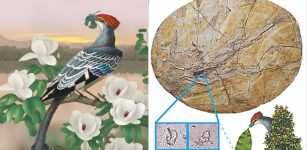 120-Million-Year-Old Fossil Reveals Early Bird’s Leaf-Eating Habits
Fossils | Aug 8, 2023
120-Million-Year-Old Fossil Reveals Early Bird’s Leaf-Eating Habits
Fossils | Aug 8, 2023 -
 Yokai (Yōkai): Mysterious Interdimensional Force With Odd Abilities In Japanese Mythology
Featured Stories | May 15, 2017
Yokai (Yōkai): Mysterious Interdimensional Force With Odd Abilities In Japanese Mythology
Featured Stories | May 15, 2017 -
 Well-Preserved Fragments Of Epetion’s Wall Discovered At The Hellenistic Site Of Stobreč, Near Split, Croatia
Archaeology | Oct 11, 2024
Well-Preserved Fragments Of Epetion’s Wall Discovered At The Hellenistic Site Of Stobreč, Near Split, Croatia
Archaeology | Oct 11, 2024 -
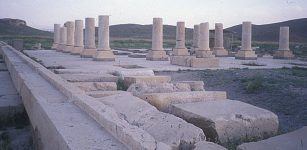 Pasargadae: Capital Of Achaemenid Empire Destroyed By Alexander The Great
Civilizations | Oct 24, 2016
Pasargadae: Capital Of Achaemenid Empire Destroyed By Alexander The Great
Civilizations | Oct 24, 2016 -
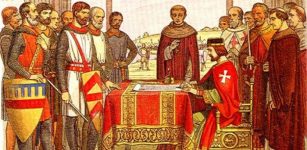 On This Day In History: King John Of England Died – On Oct 19, 1216
News | Oct 19, 2017
On This Day In History: King John Of England Died – On Oct 19, 1216
News | Oct 19, 2017 -
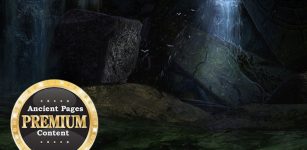 Mysterious Underground City In Brazil Could Re-Write Ancient History – Riddle Of The 12 Men – Part 2
Ancient Mysteries | Jan 26, 2022
Mysterious Underground City In Brazil Could Re-Write Ancient History – Riddle Of The 12 Men – Part 2
Ancient Mysteries | Jan 26, 2022

